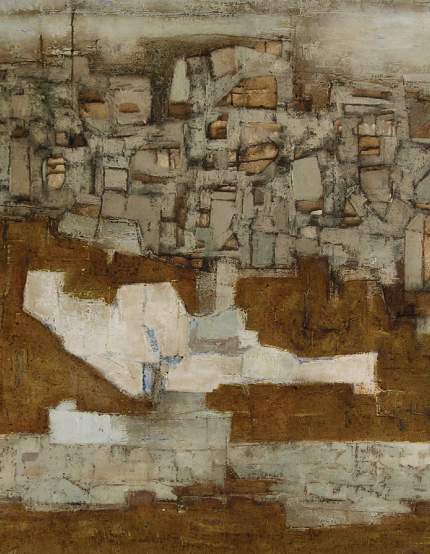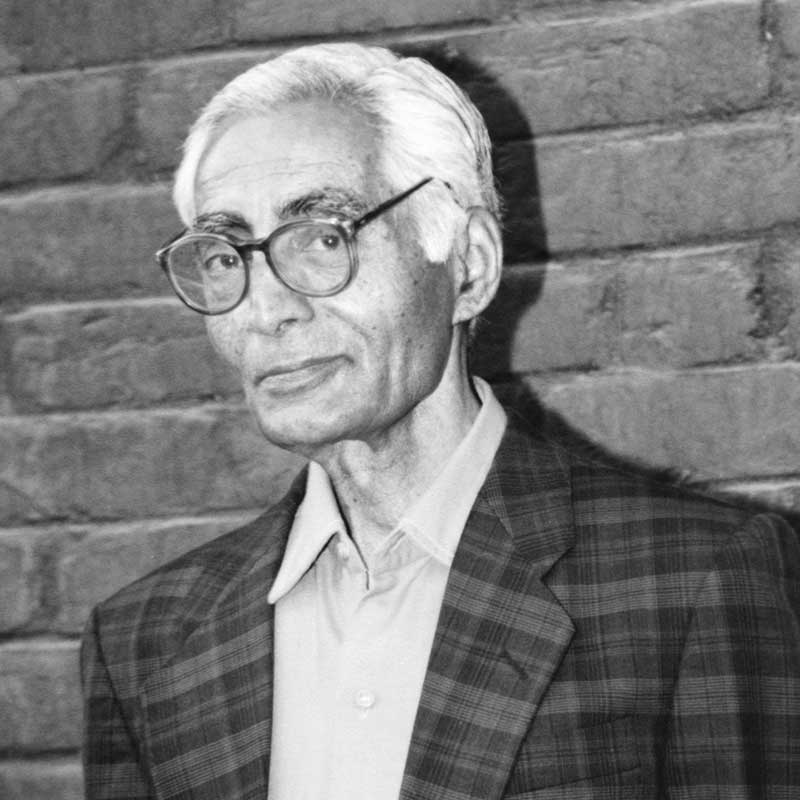
This exhibition was a retrospective of one of India’s most respected abstractionists. The JNAF has a robust collection of works by Ram Kumar, 20 in all. Nicholson clearly admired the artist and collected his work right from the early period, beginning with a 1958 oil on canvas and continuing right up to Nicholson’s death in 2001 - the last Ram Kumar work in the collection is dated 1999. The range of paintings that were part of the exhibition reflect the core strength of the collection – that it brings together not only the work of the great Indian modernists, but traces the various stages in their development as artists.
The 20 works that were featured in the exhibition, largely covered the significant phases in Ram Kumar’s growth as a painter: the early figurative period, followed by the gradual drift away from the figure to the landscape, explored in the archetypal form of the eternal city –Varanasi, Hinduism’s most sacred centre. Several works mirrored his journey from the expressionist- abstract aspect that he employed in the late sixties, to the serene lyricism of the 70’s and the 80’s and later the dissolution of the landscape in a cosmic imagery.
Ram Kumar played a significant if unintended role in the story of the Nicholson collection, as gallerist Dadiba Pundole relates. By the 1980’s the Indian art market was finally looking up and some of the more respected artists, could command a good price for their work. Nicholson who was till then used to paying for paintings in the several hundred, was reluctant to make the upgrade to a several thousand and his collecting came to a standstill in the early 80’s. One evening in 1986 he walked into the Pundole gallery and spotted a Ram Kumar in the corner. After a few casual questions about its price, the Pundoles were surprised to find Nicholson pay for the painting and walk away with it. Ram Kumar put an end to the Nicholson drought and got him back to collecting with a renewed passion, after which there was no looking back.
Exhibition Catalogue:
Ram Kumar: Works in the Jehangir Nicholson Collection
Price: 350.00 (Shipping cost not included)
Year of publication: 2015
Size: 27 x 24 cms
Type: Paperback
Pages:43 pages
ISBN: 978-81-928046-5-1
To purchase: Write to us at connect@jnaf.org

Ram Kumar (1924-2018) was born in Simla, Himachal Pradesh. He initially obtained an MA in Economics from St. Stephen’s College, Delhi, but decided to move towards an artistic career by taking classes at the Sharda Ukil School of Art under Sailoz Mukherjee. There, he met S.H. Raza and they became good friends, and he soon became associated with the Progressive Artists’ Group along with M.F. Husain, K.H. Ara, and F.N. Souza. Kumar also spent time in Paris, where he studied under Andre Lhote and Fernant Léger, and was inspired to join the French Communist Party.
Kumar is considered to be one of the first Indian artists who moved away from figurative painting, towards abstraction. He painted landscapes, and his media of choice was usually oil or acrylic on canvas. Kumar’s works were exhibited both in India and internationally, including the 1958 Venice Biennale, and two Festival of India shows which were held in the USSR, 1987, and in Japan, 1988. One of Kumar’s most recent solo exhibitions was in 2015 at the Jehangir Nicholson Art Foundation, Bombay. He also wrote in Hindi, and among his published works are eight collections, two novels, and a travelogue.
His main concern was the theme of the human condition, which manifested in his early works as the alienated individual in the city. Later on, he focused on the city of Varanasi, capturing its dilapidated and cramped houses, which conveyed a sense of hopelessness. Over his career, Kumar’s works become increasingly abstract, evoking both the joy of natural spaces and later, feeling of incipient violence which came with human habitation.
Kumar was the recipient of numerous awards including the Padma Shri (1972); the Padma Bhushan (2010); Rockefeller Fellowship (1970); and the Lalit Kala Akademi Fellowship (2011). He lived and worked in Delhi until his death in 2018.